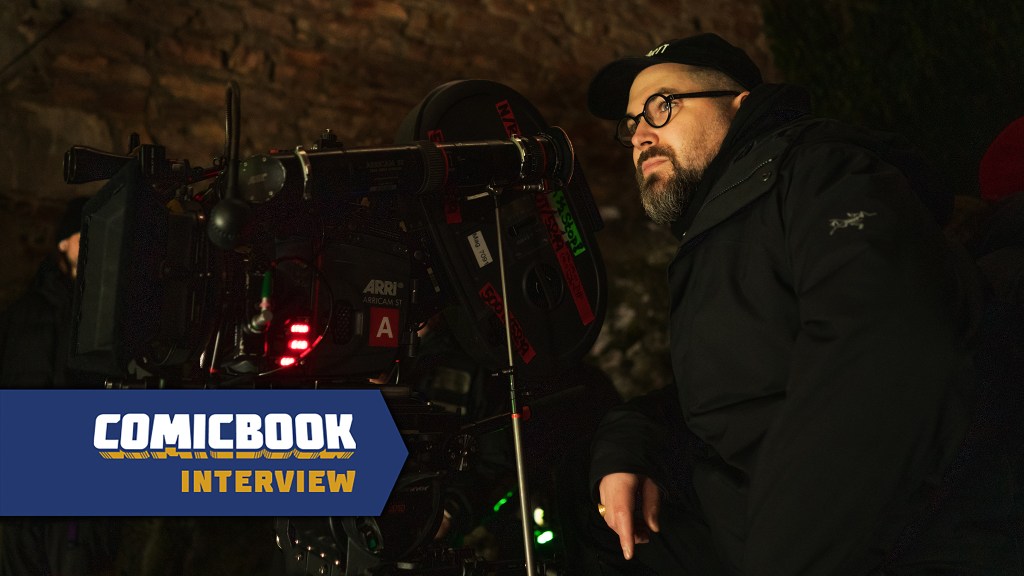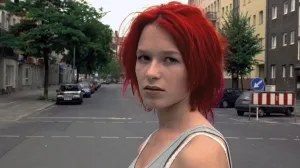Robert Eggers’ breakout movie was The Witch, an experience in terror that screened at the Sundance Film Festival in 2015 but wouldn’t be unleashed on audiences for a full year. The critical acclaim Eggers earned from the picture offered him the chance to explore projects he dreamed of bringing to life, namely a new take on F.W. Murnau’s 1922 movie Nosferatu. After some initial setbacks, Eggers pivoted to original films like The Lighthouse and The Northman, with his focus on those projects, along with the coronavirus pandemic and writers’ and actors’ strikes pushing back a Nosferatu revival even further. After years of waiting, Eggers’ Nosferatu arrived in theaters on Christmas Day 2024 and cemented itself as one of the year’s most talked-about experiences in terror. Nosferatu is available now on Digital and hits 4K Ultra HD, Blu-ray, and DVD on February 18th.
Videos by ComicBook.com
Nosferatu is a gothic tale of obsession between a haunted young woman and the terrifying vampire infatuated with her, causing untold horror in its wake. Starring Bill Skarsgård (IT franchise, Barbarian), Lily-Rose Depp (The Idol, The King), Nicholas Hoult (Renfield, The Menu), Aaron Taylor-Johnson (Nocturnal Animals, Bullet Train), Emma Corrin (Deadpool & Wolverine, The Crown), and Willem Dafoe (The Northman, The Lighthouse).
ComicBook caught up with Eggers to talk about the film’s development, collaborating with his cast, and developing the iconic look of the monstrous Count Orlok.

ComicBook: This film has been a passion project of yours for years. Even when it got more real, like a decade ago, when it seemed like this actually could happen, the movie went through some changes, delays, casting changes. Is what we saw in your Nosferatu essentially the core vision that you had initially, or did it go through a lot of evolutions over the years?
Robert Eggers: No, I mean, I don’t know that I could have succeeded in articulating it as well, whether it turned out well or not, had I made it 10 years ago, but this is the movie. Over the years, it was mainly sharpening, getting rid of exposition, but it was like, “A little more ship, a little less ship, we can’t afford this much ship.” That kind of thing.
The cast is so fantastic in this. Lily-Rose I wasn’t super familiar with and she totally blew me away. Once you got the cast involved, how did they alter the vision of the movie? What did they bring that you hadn’t anticipated that left an impact on the final product?
I think that I have such a very clear vision of what I want that they are giving that life. But then, of course, you’re working with an actual human being and things do turn out differently. I think, while I pre-plan the shots with Jarin Blaschke, my cinematographer, and we’re often acting the scenes out, the two of us, like in our kitchen or in his office, trying to figure it all out, and a lot of the times it’s done as rote.
But I think, for example, the most show-stopping scene with Lily, her second really big possession scene towards the end with the brown-and-white striped dress, that was something that we rehearsed to death. And then when we were shooting it, it was not working right. We had to stop the scene and figure out how to do it differently so that then we had to re-rehearse it this other way, but it is much cooler than anything I had imagined.
One of the main things that Bill brought to the performance, because I was so obsessed with Nosferatu being demonic and masculine and phallic and evil, is still finding some vulnerability. I think that makes the character so … I’m so embarrassed that I was not keen to explore that aspect of him, just because I was so tired of self-loathing, sad vampires. but you needed a little bit of that as well.
The scene with Lily, that possession, was a transformative point in the movie that it solidified how fantastic the movie was. What were the things that weren’t working? Was it just blocking? Was it just the tone? What was it that you felt didn’t work?
Well, we had done so much with her body earlier that we were feeling it was going to be, even though we were shooting out of sequence, but we finally, once we actually saw it lit, it was perhaps repetitive. And also, she’d always rehearsed in a corset and with skirts, the actual dress was even more restrictive and covering her. So we were like, “This needs to be all about the face,” and I’m so glad. But the other thing is, because she had been working with Marie-Gabrielle Rotie, the choreographer, for months on all these different techniques, she was able to readjust, because she had been doing a lot of those facial things for other scenes in different ways and things that she had tried. So we were like, “Okay, remember that thing and this thing? Let’s go back and finesse those for this.”
Knowing how long you wanted to make this movie and how, it seemed like The Lighthouse came out, The Northman came out, you would mention like, “Yeah, I still want to do Nosferatu.” Now that the movie is done, what was the most satisfying part of the whole process, of checking that item off your bucket list? Was it the actual filming of it that was the fulfilling part? Was it when you finally locked the edit? Was it seeing how audiences were connecting to the movie and reacting to it?
It’s obviously finally sharing it with the world and seeing that a significant amount of people are connecting because you’re doing creative work like this to share what it is to be human with other human beings. Maybe that’s weird for a Gothic vampire movie, but it’s still hopefully talking about ourselves to each other.
Speaking to Orlok’s design, you knew people were going to have some complex reactions to it, given how different it is from previous incarnations of the character. Did you anticipate that there would be so much attention paid to a mustache? Of all of the different tweaks and changes, that people would just be like, “Wow, never thought I’d see Orlok with a mustache,”?
I knew it would be divisive because I knew that some people would be too attached to Max Schreck. But it’s like, I love Max Schreck. It’s one of the most iconic makeup designs in history. So why should we be doing it again?
And also, frankly, if he was a Transylvanian nobleman, there’s no f-cking way in hell or heaven that he would not have a mustache. And if you can’t wrap your mind around that, I’m sorry.
What does it feel like that you’re part of the legacy of Nosferatu and years from now, people are going to be comparing Eggers to [F.W.] Murnau to [Werner] Herzog. How do you feel on a personal level?
No comment on that one, buddy.
I’ll check back with you in a few decades and we’ll get we’ll get a better reaction. Lastly here, anytime someone has a big hit in the genre world, it’s like, “Oh, well, you’re going to jump to a Marvel or a Star Wars movie.” I know that’s not of interest to you, there’s been some like chatter kicking around about you may be involved with a new Labyrinth thing. I don’t know if there’s any truth to that, if you can’t comment on that either, or if that’s just fans making stuff up.
The thing is that I always have a ton of things in development, because you need to to survive in this industry and you don’t know what is going to hit next. But I definitely want the next film I make to be an original movie.
Nosferatu is available now on Digital and hits 4K Ultra HD, Blu-ray, and DVD on February 18th.
This interview has been edited for length and clarity. You can contact Patrick Cavanaugh directly on Twitter or Instagram.








